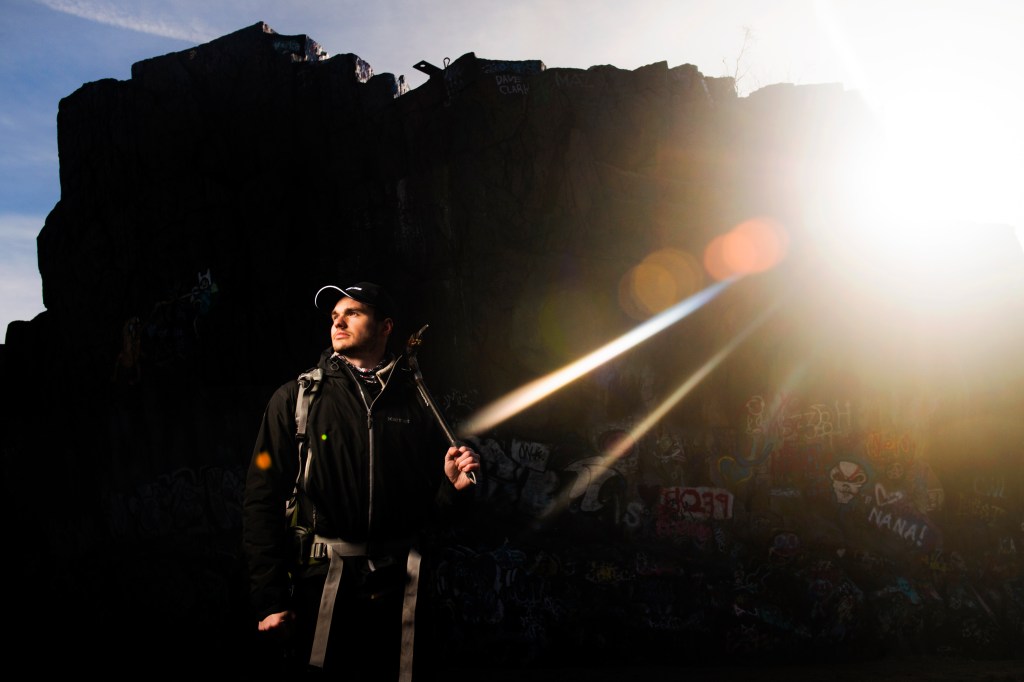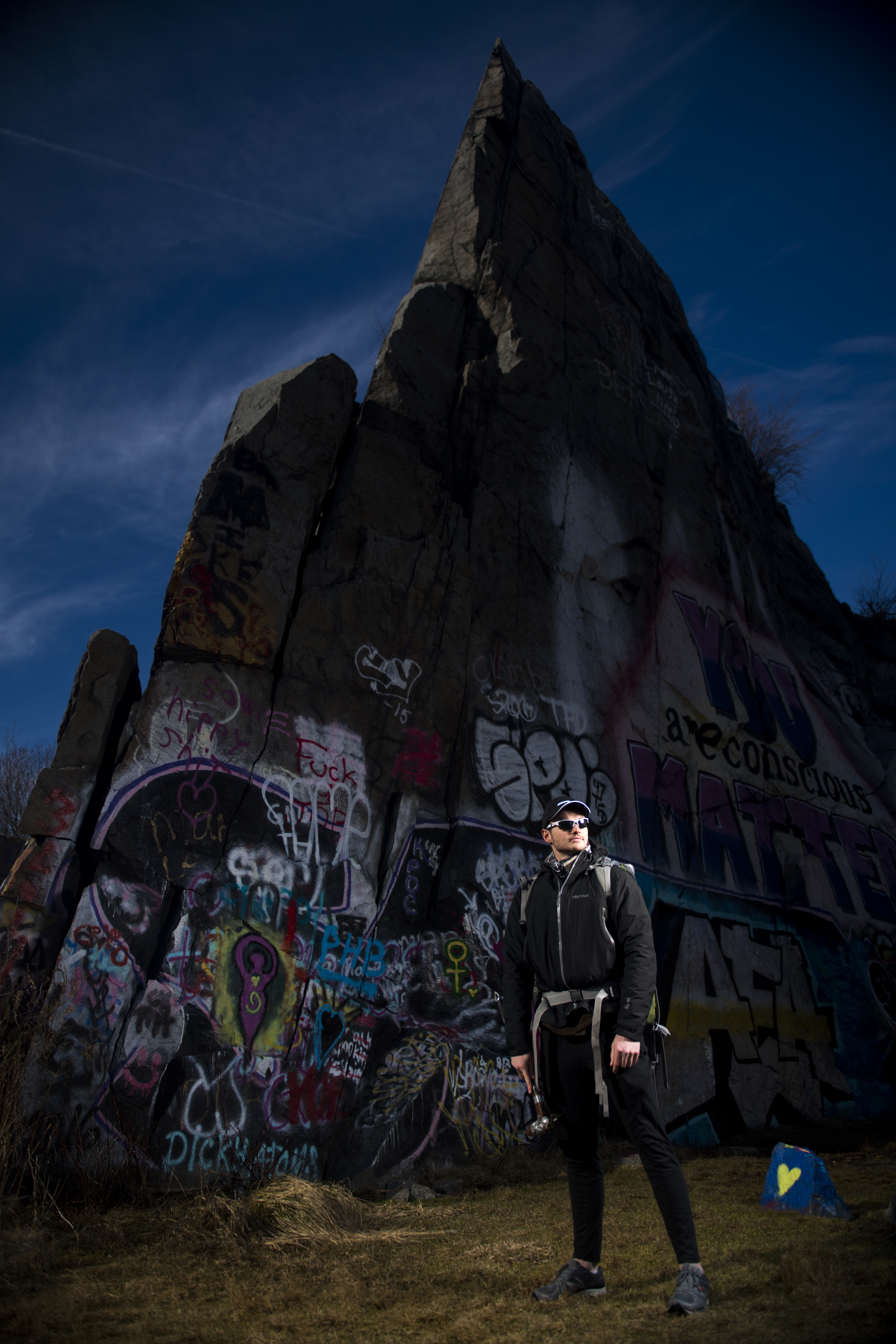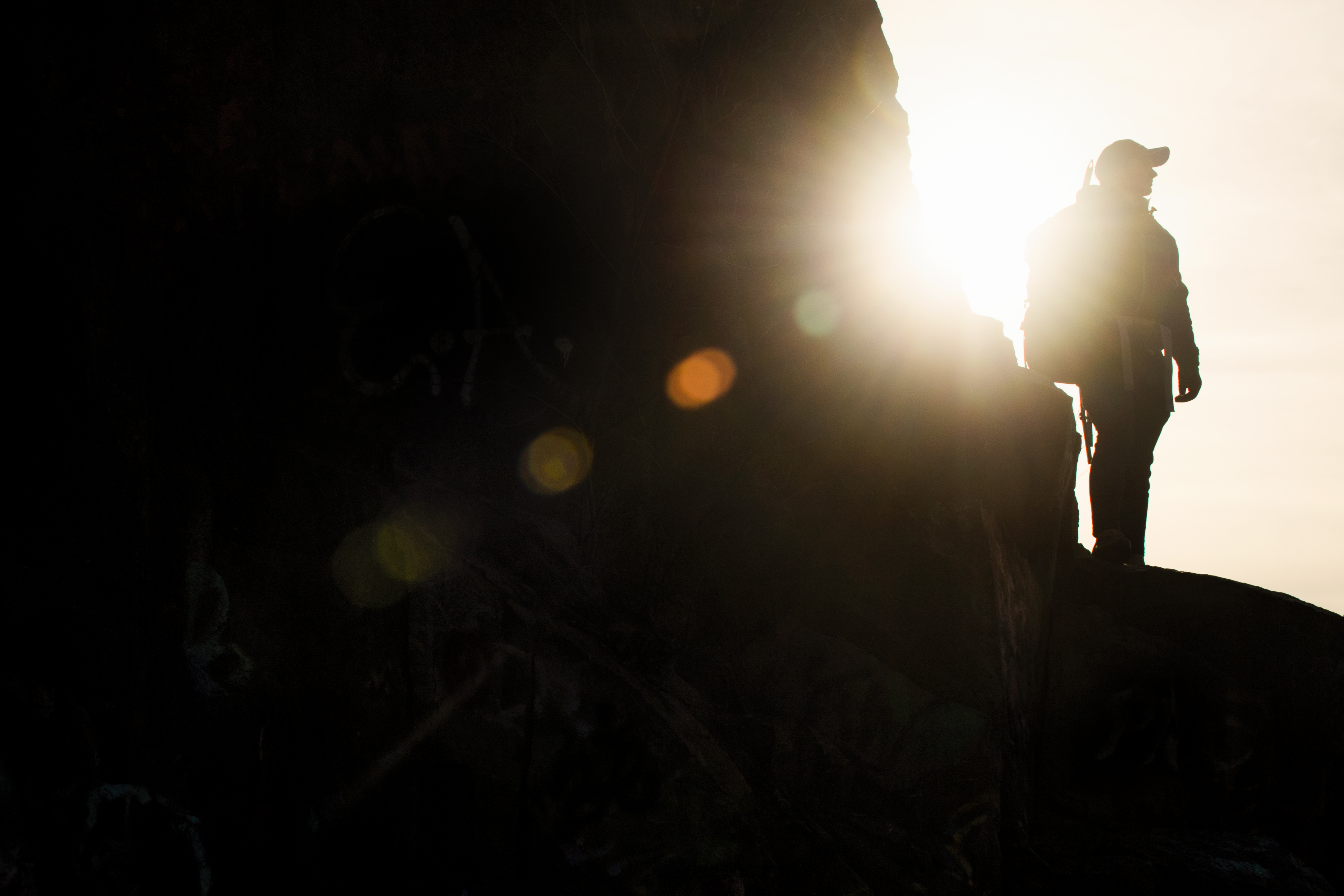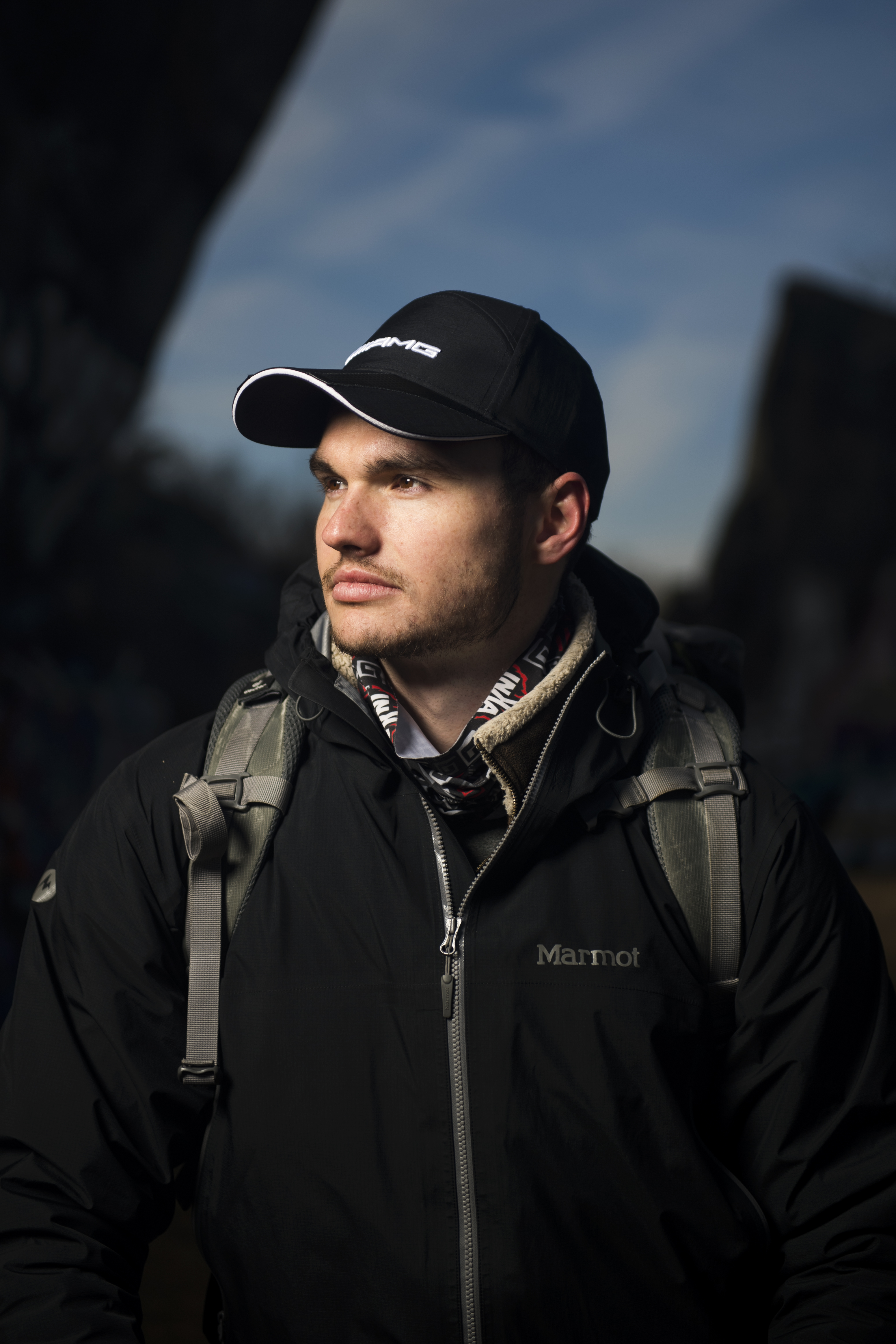Mountaineer plans climb to ‘top of the world’

“I live for pushing myself,” says Matthew Kernan, a self-styled outdoorsman with a penchant for adventure. It’s why he’s preparing to climb Mount Everest, which he calls the “ultimate proving ground.”
Kernan, SSH’19, knows the risks. He could lose his fingers. He could lose his toes. He could lose his mind. He could lose his life. And yet, he says, “I’m super excited for this.” His climbing philosophy is simple: “There’s no tap-out button. You can never stop fighting to survive.”
Kernan’s two-month journey to the peak of Mount Everest will begin on April 1. He’s created a website to showcase his climbing prowess and launched a GoFundMe campaign to raise money for the trip, which will cover the cost of a mountain guide, gear, food, and supplemental oxygen. “This mountain is the culmination of lots of experience and training,” he writes on his fundraising page, noting his plans to blog before, during, and after the climb. Scaling Everest, he says, “has loomed in the back of my mind, quietly inviting me to attempt the awesome challenge.”
‘I’m on top of the world’
Kernan is an accomplished athlete. He grew up playing football, holds a black belt in Taekwondo, and spent part of his freshman year on the rowing team. But high-altitude climbing hadn’t crossed his mind until the winter of his second year, when he was surfing the web and stumbled on a photograph of Mount McKinley in Alaska. “That’s pretty badass,” he thought. “I’m going to climb it.”
Knowing that a person can’t just walk to the top of the highest mountain in North America, Kernan set out to get the experience he needed. That summer, he and his father climbed the three highest peaks in Ecuador—Cayambe, Antisana, and Cotopaxi—each of them over 18,000 feet.
“It was an intense trial,” he says. “You start for the summit at 10 p.m. because you want to be climbing when it’s the coldest and the ice is the hardest. When you reach the summit, you’re 5,000 feet above the cloud line.”

Photo by Adam Glanzman/Northeastern University
After his success in Ecuador, Kernan set his sights on Mount McKinley. Also known as Denali, the mountain towers at 20,310 feet and is considered the coldest mountain on Earth, with winter temperatures plunging to around 40 below 0. “It’s like going to Mars,” Kernan says of McKinley’s landscape. “It’s 300 miles from civilization, just this frozen place that’s so quiet and so beautiful.”
His climb, in May 2015, took three weeks, testing both his physical strength and his mental toughness. He carried a 75-pound backpack, pulled a 40-pound sled, and saw avalanches virtually every day. A boulder the size of a Volkswagen landed on the trail just a few feet ahead of him before crashing another 2,000 feet down the mountain. But he eventually made it to the peak and thought, “I’m on top of the world.” He started crying, hugging his climbing mates, taking photos. Then he realized that he was chilled to the bone, literally freezing to death. “Let’s get the hell down,” he says. “We’re only halfway done.”
After conquering Denali, Kernan vowed to climb the highest mountain on all seven continents. Accomplishing this goal—the top item on his bucket list—would put him in rarefied air: Fewer than 500 people have reached the peak of the so-called Seven Summits since mountaineer Richard Bass first completed the challenge in 1985. “It’s hard for most people to understand,” Kernan says of his passion for mountaineering. “A lot of people say, ‘I don’t like cold showers, why would I want to freeze for two months?’”
Kernan is slowly crossing peaks off his list. He scaled Mount Elbrus in July, the highest mountain in Europe at 18,510 feet. “The trip,” he writes on his website, “ended with a delightful tour of a Russian hospital due to dehydration and food poisoning immediately after summitting.” Next up is Mount Everest, the world’s highest mountain, whose peak rises 29,035 feet above sea level. His pursuit of the Seven Summits is guided by a philosophical motto popular in the climbing community: “The summit is for the ego, the journey is for the soul.”
‘A 400-pound ice cube’
On May 29, 1953, Sir Edmund Hillary and Sherpa Tenzing Norgay became the world’s first two people to summit Mount Everest. Since their remarkable feat nearly 65 years ago, more than 8,300 mountaineers, thrill-seekers, and novice climbers have reached the top of what Sherpas call the “Mother Goddess of the Earth.” Others haven’t been so lucky. According to the Smithsonian, more 200 dead bodies dot the mountain today, serving as trail markers for intrepid outdoorsmen like Kernan. “Let’s say I die on the mountain,” he explains. “I’m a 400-pound ice cube and you can’t take me home.”
Mount Everest—located in the Himalayas on the border between China and Nepal—is one of the most inhospitable places on Earth. The risks are many, from frostbite to hypothermia to high-altitude sickness. The summit temperature will be approximately minus 20 degrees Fahrenheit when Kernan climbs to the top of the mountain in late May—and that’s without factoring in the wind chill. When he reaches the so-called “death zone”—the portion of the mountain above 26,000 feet—extreme fatigue and dizziness will likely set in. He risks hypoxia, lack of oxygen to the brain, which could impair his judgment and compel him to make poor decisions in one of the most dangerous environments in the world.

Matt Kernan plans to climb the highest mountain on each continent. Graphic by Josh Reese.
“At 26,000 feet, you can barely keep yourself alive,” Kernan says. “On Summit day”—a 16-hour, 3,000-foot ascent beginning in the dead of night—“I’ll be taking one step for every 20 breaths. I can’t give in and I can’t stop. I have to be OK with suffering the whole time.”
Pete Van Deventer, a senior guide for RMI Expeditions, says the high altitude and sheer length of the climb make Mount Everest a particularly challenging trek. “You’re going to lose muscle mass regardless of what you do,” says Van Deventer, whose climbing resumé includes Denali, Mount Elbrus, and Aconcagua, the highest peak in South America at 22,838 feet. “Then there’s the mental piece of going day in and day out for two months and really pushing yourself to uncomfortable limits a lot of the time.”




Kernan will be prepared. His supplies will include 30 pounds of dehydrated food, a -40F sleeping bag, and a “small pharmacy” of sleep aids, prescription painkillers, and antibiotics. “I’m going to get sick,” he says. I’m going to get a chest infection. It’s not if I’ll have a bad day, it’s when and how many.” He’ll wear Kevlar-lined boots, several layers of synthetic clothing, and a head-to-toe down suit. Among his equipment will be an ice ax, a belay device, and an ascender, a mechanical tool used for climbing rope. He’ll carry a mobile phone, loaded with a carefully curated selection of songs for the expedition. His “Everest Playlist” includes Throwing Snow’s “Avarice,” Bassnectar’s “Underwater,” and Moguai’s “Oxygen.” He favors tribal beats, saying, “climbing is all about pace and rhythm.” Some things will be out of his control—and he’s OK with that. “If an avalanche comes down and gets me, there’s nothing I can do. I’ve come to grips with that.”
Why she said ‘yes’
Mount Everest isn’t for the weekend warrior. Van Deventer says “you need to come in with a really high level of fitness” because “you’re going to get beat down,” and Kernan isn’t cutting any corners. He’s 6-feet-tall, weights 200-pounds, and is determined to train his body to withstand some of the harshest conditions on Earth. “I want to be in the most savage shape possible,” he explains.
His routine is shaped in part by a book called Training for the New Alpinism, a climbing manual that covers everything from mental fitness to training theory. Every detail of his program, from tracking his diet to his heart rate, is tailored to help him summit Everest and return to Boston in good health. He’ll leave no stone unturned in his pursuit of the peak—but he knows his limits. “I love seeing how far I can take things,” he says. “But the best mountaineers are the ones who know how to push and have the humility to pull back.”

Photo by Adam Glanzman/Northeastern University
Kernan works out six days per week, performing hundreds of planks, pull-ups, and weighed lunges. Every other day, he straps on a 45-pound backpack and climbs the stair stepper at the Marino Center for up to five straight hours, passing the time by listening to podcasts like the “Joe Rogan Experience” or Dan Carlin’s “Hardcore History.” He walks up and down the Harvard Stadium steps for two hours at a time. “I have to be ready for seven-hour days,” he explains, “slogging away with a 40-pound backpack.”

Photo by Adam Glanzman/Northeastern University
Kernan’s family supports his passion for climbing. His father loves it, while his mother “thinks it’s amazing but has some fear.” His fiancé, Stephanie Norris, SSH’18, admires his work ethic, citing his laser sharp focus as his most inspiring attribute. “If he likes something,” she says, “he pushes himself toward it.” Kernan proposed to Norris last week, after a two-year courtship. They met at State Street in July 2015, when he was starting co-op there and she was finishing up an internship. He had recently returned from Denali and took to sharing photos of the experience with her. “He was flying high and I was hearing a lot about it,” Norris jokes. “At first I thought it was crazy, but he convinced me to do a couple climbs and now I think it’s incredible.” Together they’ve climbed New Hampshire’s Mount Washington and Washington’s Mount Rainier. Now Norris wants to conquer Denali—all thanks to Kernan. As she puts it, “he pushes me constantly.”
Part of Norris worries that Kernan’s intensity will hinder him on Mount Everest, compelling him to climb higher and higher when he should turn around and give in to Mother Nature. But if the past is any indication of the future, Kernan will be smart, levelheaded, cool under pressure. He’ll know whether to advance or retreat. When Kernan and Norris climbed Mount Rainier, they faced down a gigantic rock hurtling straight for them. “Matthew saw it getting too close to us and he dove off the edge of the mountain and pulled me with him,” Norris explains. “We anchored in and the rock went flying over our heads.”
Kernan’s philosophy is simple: If he can conquer Denali, Elbrus, and Everst, he can conquer anything. Quotidian life is easy, he says, once you’ve faced down the perils of mountain climbing. “Why wouldn’t I go for everything the way I go for this?” he says. Norris, for her part, knows that Kernan will be successful no matter what he does. “I expect him to do a lot of cool things in his life,” she says. “That’s probably why I said ‘yes.’”





